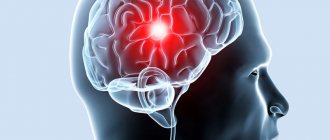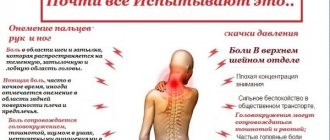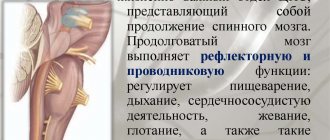Phagophobia is a disorder in which a person experiences an obsessive fear of choking on food and suffocating. Previously, this phobia was combined with the fear of suffocation - pnigerophobia. Refers to a subcategory of physical fears associated with feelings of pain or discomfort. Phagophobia is very common; in a mild form, this phobia is often seen in anxious mothers when they are afraid that their child will choke on food.
Symptoms of fear of choking
The main symptoms of phagophobia:
- inability to take pills or oral medications;
- sudden loss of interest in most foods or liquids;
- rapid weight loss;
- an increase in general anxiety or worsening depression.
A person suffering from phagophobia spends a long time psyching himself up before eating each piece of food. All this is preceded by a careful compilation of a “safe” menu. And even after this, all food on the plate undergoes a thorough check, as a result of which they try to identify dangerous or suspicious products. In this case, anything can turn out to be suspicious. A seemingly ordinary product can cause anxiety, and even panic, when trying to swallow it.
Physically, this fear is manifested by the following signs:
- the desire to run;
- excessive sweating;
- manifestation of arrhythmia;
- panic attacks;
- fainting;
- nausea or dizziness;
- intermittent, labored breathing.
What to do when symptoms first appear
What to do if food gets stuck in your throat, how to relieve the condition. If this is your first time having an episode and you don't know what to do, try the following:
- Drink warm water without gas.
- Change your position by leaning forward a little or, conversely, straighten up, raising your head up.
- Try to swallow air, as if pushing it into the esophagus.
Causes of phobia
Psychologists explain the emergence of phagophobia for the following reasons:
- hereditary predisposition. Genetic abnormalities in which negative associations with food arise, resulting in a fear of choking;
- various nervous system disorders. Depression, panic attack, excessive suspiciousness or anxiety cause a spasm in the throat, which leads to the progression of the disease;
- psychological trauma received in childhood. Often explained by overfeeding the child when he did not want to.
- personal observation of a scene of suffocation while eating, leading to death.
Often, although not always, a phobia is caused by a negative experience in the past. Perhaps the person was nervous while eating or thought about something unpleasant, which caused a spasm in the throat, and for some time he felt suffocated. Perhaps there was some concern about a particular food, and the person tried to force himself to eat it, which caused an uncomfortable feeling. Perhaps there was a sore throat, and there was pain when swallowing.
Often the onset of the disease can be triggered by a trivial situation when a person simply choked. At the same time, for a moment he felt asphyxia and panic fear of death. This is often enough to cause an unreasoned, uncontrollable fear of the act of swallowing.
However, a phobia can arise in the complete absence of any obvious, explainable reasons. Everything is very individual and requires mandatory consultation with a psychologist.
Why does phagophobia occur: causes of pathological fear
For the formation of phobic anxiety disorder, in most cases, three conditions must be met:
- specific personal portrait;
- an event that actually happened, saw or heard with the phenomenon of mechanical asphyxia;
- fixation on the impressions received.
Patients with phagophobia are suspicious, sensitive, impressionable and vulnerable individuals. They perceive changes, difficulties, and troubles painfully. Such persons are distinguished by pessimism and see a source of danger even in situations where there is no real threat. Many individuals with phagophobia were raised by anxious parents who tirelessly protected and warned their child. The thinking of most phagophobes is saturated with prejudices and harmful attitudes. They are convinced that some dramatic event will definitely happen to them, and their life will end prematurely as a result of a tragic incident.
On this fertile soil, the germs of a phobia arise after a situation where a person choked and experienced unpleasant sensations from a stuck foreign body. At such a moment, the subject temporarily experiences a lack of oxygen and breathing difficulties, which causes well-founded fear. The fear reaction is accompanied by a surge of adrenaline, which is manifested by unpleasant autonomic reactions: increased heart rate, increased blood pressure, and a feeling of impending fainting. The inability to take a full breath is regarded by the brain as a serious threatening factor. A relationship is formed in the subconscious: food intake and danger to life.
Moreover, it is not necessary that the incident take place in a person’s life. For the formation of phagophobia in an impressionable individual, it is enough for him to hear or see such news.
The third factor influencing the formation of the disorder is fixation on the experience. A person who tends to fixate on an event that has happened cannot be distracted and switch to other aspects of life. He constantly replays the incident that happened. The more he thinks about it, the stronger the fear becomes. Obsession creates anxiety in the subject, directed forward. Thus, the anticipation of imminent drama - the fear of choking - is firmly rooted in a person’s thinking.
Forms of phagophobia
Phagophobia distinguishes several forms of development of the disease. In mild cases, fear of choking can be caused only by certain foods, for example, fish due to fear of choking on the bone. Or dry, hard foods, for fear of choking on a piece when swallowing. In this case, swallowing liquids does not cause difficulties.
A more severe, pronounced form is the inability to swallow any solid food. In this case, a person suffering from the disease grinds all food into a puree or paste-like mass and is able to swallow no more than one teaspoon at a time.
And the most severe form of phagophobia is fear of the very act of swallowing. This form of the disease is the most dangerous because it causes irreparable, dangerous damage to health. This can be anorexia, complete exhaustion of the body, leading to death if you do not seek help from specialists in time.
There are such specific types of phobias as fear of swallowing a pill, while solid food and liquid do not cause concern. This form is often found in children.
Possible complications
The lack of psychological help leads to a worsening of the patient's condition. The following ailments can develop through constant fear and negative beliefs:
- Kibophobia is a complete refusal to consume any nutritious foods. It can result in anorexia, which is fatal.
- A mild degree of the disease is observed with complete restriction of solid food. Patients are switched to liquid feeding, which excludes sufficient nutritional replenishment.
- The fear of swallowing food produces a refusal to visit places where food is sold - restaurants and ordinary cafes. A person begins to isolate himself on his own problems and stops communicating with loved ones.
- Long-term depression develops because people spend all their waking hours planning their own diet.
Based on the impact that this disease has on a person, it is impossible to ignore the need for treatment and specific care in this situation.
How to get rid of fear on your own?
If the disease is not severe, you can try to help yourself. To understand where the fear of swallowing food came from and how to get rid of the phobia, you should analyze your past. Find out under what circumstances a feeling of anxiety and fear for your life arises. Understand that all problems are associated with an incorrect way of thinking and perception of the environment. After all, the body will never kill itself, which means that the source of fear is hidden in the subconscious.
Perhaps you should take a vacation from work, rest, get some sleep, calm down, and reconsider your views on life. If introspection and self-hypnosis do not help, you should immediately contact a psychotherapist, without starting the disease and without bringing it to severe forms of manifestation.
Differences from other diseases
You can distinguish a nervous spasm of the pharynx from other diseases based on the following signs:
- absence of problems and discomfort in the throat at night, during sleep or in the morning, immediately after waking up (due to the rest of the brain, which does not send signals for a spasm to occur);
- the appearance of a lump in the throat after vigorous activity has begun and the body has finally awakened;
- passion for some interesting activity or complete immersion in work contribute to the disappearance of unpleasant symptoms, or rather to the switching of the brain to other tasks, which leaves it no time for neurosis-like manifestations.
Treatment of fear of choking
Phagophobes cannot live a full life and feel self-sufficient, because restrictions manifest themselves not only in eating behavior, but also in social contacts. For example, the patient does not go to cafes with friends, does not stay with colleagues at corporate events, and stops visiting relatives with the obligatory tea party.
Food, water and medicine help keep you alive and healthy. Therefore, it is important to recognize the problem early and seek professional help.
Important! The cause of the disease is not always psychological problems. Inflammation of the pharynx, diseases of the esophagus or stomach often cause difficulty when trying to swallow anything. Therefore, the examination must be comprehensive.
Fortunately, phagophobia responds well to a variety of treatment options. If the gastroenterologist does not find any deviations from the norm, you should seek help from a psychologist-hypnologist, for example, Nikita Valeryevich Baturin. Such a specialist will individually select treatment using psychotherapeutic methods for a specific case.
Psychotherapeutic treatment
When a patient turns to a psychotherapist with the complaint “I’m afraid to swallow,” the specialist uses psychotherapeutic methods, including putting him into a state of hypnosis, to find out the source of this fear. Next, the psychologist, using the method of cognitive behavioral therapy, corrects the patient’s unconscious inferences and attitudes that distort real events. Proper correction of this way of thinking completely eliminates anxiety disorders, depression and inadequate perception of food.
Another common method of influencing the psyche of a person suffering from phagophobia in order to get rid of fear is neurolinguistic programming. The essence of this technique is for the patient to understand that he himself controls his own mental activity. Having achieved this understanding, the patient builds effective strategies for improving himself and gaining control over his fears.
If within several months psychotherapeutic methods of treatment do not alleviate fear, medications are added to them.
Drug treatment
Drug treatment is aimed at eliminating anxiety-phobic manifestations of the disease with the help of antidepressants and anxiolytics. These drugs normalize the state of the patient’s nervous system, fight anxiety, neuroses and help to find peace of mind. Treatment with medications is long-term, at least one year.
In especially severe cases, tranquilizers and antipsychotics are used. These drugs have quite severe side effects, so long-term use is not recommended. Only in critical situations under medical supervision.
Drug treatment, not supported by psychotherapeutic intervention, can give a regressive result after stopping taking the drugs. Therefore, the help of a psychotherapist should not be neglected. Combined treatment provides a guaranteed result of complete elimination of phagophobia.
Alternative Treatments
Treatment of phobias by a psychotherapist often takes a long time. To achieve a stable positive result, psychotherapy is supported by alternative treatment methods. These include:
- art therapy (painting with paints or sand, sculpting, playing musical instruments);
- meditation, reading mantras;
- healthy lifestyle, physical activity;
- breathing exercises;
- use of self-hypnosis techniques.
Another way is to try to focus your attention on something distracted while eating. When food hits the root of the tongue, it triggers a reflexive swallowing reflex. Don't disturb your body by focusing on your fear. At first it will work out poorly, but over time this tactic will yield results.
What does it represent?
Phagophobia usually occurs in combination with pnigophobia – fear of suffocation in general. It manifests itself mainly in people when they get sick, have a nicotine addiction, or their profession is risky and damages their health.
That is, at the moment of eating, a pnigophobe is rarely visited by the fear that he will choke and die.
Almost every person has choked on food or a pill at least once in their life. Do you remember this state when literally in a second, from horror, a stream of thoughts that this is the end manages to flash through your head?
This is how a phagophobe usually spends his everyday life. Moreover, he is not always afraid only for himself; in some cases, in addition, he also worries about loved ones.
Or he’s simply worried about not getting into a situation where he will witness someone else’s suffocation. For example, during a feast, when one of the guests accidentally gets some piece of food stuck in their throat.
Phagophobia drug treatment. Symptoms
Fear of food contributes to dramatic weight loss
The development of phobias reveals itself as characteristic clinical symptoms. It is the signs of malaise that allow a specialist to identify a mental disorder in a particular person caused by a strong fear of choking on food.
Due to phagophobia, an absolutely healthy person exhibits physical symptoms of illness. He himself may not understand what exactly contributed to the deterioration of his general well-being. That’s why you definitely need to consult a competent psychotherapist.
Fear of swallowing or fear of swallowing is characterized by the following clinical picture:
- Feeling of suffocation.
- Nausea accompanied by vomiting.
- Feeling of a lump in the throat.
- Dizziness.
- Failure to take medication.
- Sleep pattern disorder.
- Irritability and fussiness.
- Increased sweating.
- Weight loss and anorexia.
Food causes a strong disgust in a phagophobe, which precedes a panic attack. Subconsciously, he perceives any food, and sometimes even drinks, as a threat to his health and life. The body understands this and begins to actively fight the irritant. This explains the occurrence of severe nausea and vomiting, as well as a lump in the throat.
If treatment for phagophobia does not begin in a timely manner, the person’s condition continues to deteriorate. Panic attacks become more frequent and their symptoms become more intense.
Due to the inability to continue to eat food normally, a person begins to lose weight rapidly. His body weakens, and he himself becomes irritable and withdrawn.
If the phobia becomes advanced, then even the image of food or the thought of it begins to cause a panic attack in a person. In such situations, the patient requires immediate help from an experienced doctor who knows how to solve the problem and normalize the physical as well as psychological health of the patient.
How to swallow food correctly. How to eat with dysphagia
What to eat and drink if a person has problems swallowing.
Swallowing problems are called dysphagia. In this case, the risk of microscopic pieces of food or liquid entering the lungs increases significantly, that is, aspiration is possible. Changing the texture and consistency of food and liquid will help cope with this threat.
Who to contact
A speech therapist can help you cope with swallowing problems. Most likely, the specialist will give specific exercises and also teach the patient swallowing techniques that will prevent food and liquid from entering the lungs. The doctor will also tell you how to choose foods and prepare them in a way that is safe to swallow.
As rehabilitation and treatment progress, the recommended diet and swallowing techniques may change.
How to reduce the risk of aspiration
Here are five ways to help with this:
- You should sit up straight while eating or drinking liquids. Remain upright and do not lie down for another 30 minutes after eating.
- You need to eat and drink slowly.
- Try to focus on the process of chewing and swallowing food. Avoid distractions: talking or watching television.
- Take small pieces of food and a small portion of liquid into your mouth.
- Make sure there is no previous portion of food left in your mouth before taking a new one.
What to do with drinks
The consistency of a liquid is usually defined as follows: completely liquid, nectar and honey. Liquids that are close in consistency to water are completely liquid forms. For example, broth, coffee, fruit juices, milk, soda, tea.
Jelly, ice cream and ice also belong to this group because when they melt they become liquid again.
To make the liquid into a denser form - nectar, which is easier to swallow, you can use special thickeners. Some examples of liquids in nectar form are: kefir, fruit nectars, milkshakes, tomato juice.
The liquid can also be thickened to the consistency of honey.
What to do with food
If a person has dysphagia, it is worth grouping food into levels, where the first level is food that is easy to swallow, and the third is food that is difficult.
Level 1: The food is pureed and does not need to be chewed.
Purees can be made from vegetables, fruits and meat, here are examples of purees:
- apple mousse;
- baby food;
- mashed potatoes;
- pudding;
- cream soup;
- yogurt without lumps or pieces.
Level 2: Food should be soft, easy to chew and contain plenty of liquid.
This food should be cooked thoroughly, but not pureed. Here are some examples:
- cottage cheese;
- eggs;
- Steamed fish;
- chopped meat;
- noodles;
- baked potato.
Level 3. Food is soft, easy to chew, and can be cut into small pieces:
- bananas;
- soft bread;
- soft cookies;
- French fries;
- meat cut into pieces containing a lot of liquid;
- steamed vegetables.
If a person is recommended to eat a diet with a soft food consistency, this means that the food can be easily separated with a fork. Avoid hard foods, foods that crumble or break into small pieces, or meats that are too tough.











